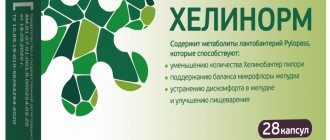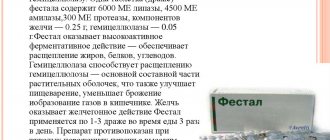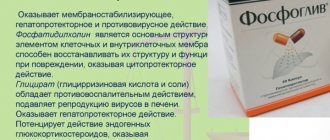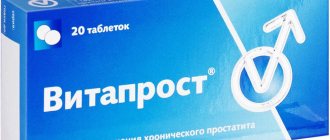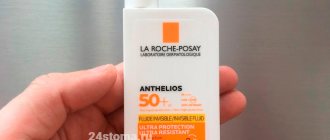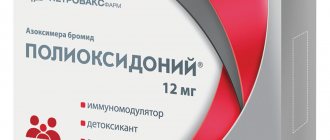Prohibited during pregnancy
Prohibited during breastfeeding
Not suitable for children
Can be taken by older people
Has limitations for liver problems
Has limitations for kidney problems
Eliquis is a factor Xa (blood clotting factor) inhibitor. The main component in the drug is apixaban. Eliquis is produced in tablets. It is used to prevent the development of venous thromboembolism, as well as after hip or knee replacement. The cost of Eliquis is quite high, so patients are interested in information about cheaper analogues of the drug.
Medicine is not prescribed for:
- allergies to the medicinal composition;
- bleeding;
- liver pathologies that are caused by disturbances in hemostasis and with an existing risk of bleeding;
- kidney dysfunction and the patient undergoing dialysis;
- therapy with anticoagulants and antiplatelet agents.
Action of Eliquis
Eliquis is also not used in pediatric practice or in the treatment of pregnant and lactating women.
The tablets must be taken orally, without being tied to a diet. Tablets are taken twice a day, 1 piece. The duration of therapy is prescribed by the doctor based on the severity of the pathology and the characteristics of the patient’s body. The average course of preventive measures can last 10-45 days.
Side effects:
- urethral, rectal and vaginal bleeding;
- hematoma formation and thrombocytopenia;
- nosebleeds and dental bleeding;
- increased arterial and intraocular pressure, hemorrhage in the eye;
- bleeding in the gastrointestinal tract and blood in the feces;
- increased transaminases.
Mechanism of action of Eliquis
The main active ingredient of the drug is apixaban. The mechanism of action of the active substance is the inhibition of blood clotting factor. That is why the drug is often used to treat and prevent venous thromboembolism, and is also prescribed as a prophylactic agent during knee or hip replacement surgeries.
Apixaban is a direct-acting anticoagulant. It selectively blocks the active center of a special enzyme Xa, thereby preventing the synthesis of thrombin and the formation of blood clots. The maximum activity of the drug is observed when the highest concentration in the blood plasma is reached. During the use of the drug, there is no need to regularly monitor the anticoagulant effect.
Eliquis is available in tablet form. After oral administration, the active component is quickly absorbed from the gastrointestinal system. The maximum amount of the drug in the blood is recorded after approximately 3-4 hours. Eating does not affect the rate of absorption of the active substance. The bulk of the drug is excreted through the intestines. The half-life does not exceed 12 hours.
List of medications
The only structural analogue of Eliquis is available on the domestic pharmacological market - Apixaban. This medication has the same composition of components as Eliquis, as well as the same purposes and contraindications. Apixaban is an anticoagulant and factor Xa inhibitor. It is made in tablets and is intended for oral use.
The main therapeutic direction is the prevention of the development of thromboembolism of the venous lines, as well as therapy after surgical treatment of joints using the arthroplasty method. In addition, there are several cheap analogues of the drug in terms of the effect it provides.
See also:
TOP 6 most inexpensive drugs analogues of Vilprafen®
Instructions for use
The course of drug therapy is agreed upon with the attending physician. Eliquis is prescribed for the treatment of pulmonary thromboembolism, vascular thrombosis, as well as for the prevention of the development of these diseases. The drug is prescribed as a prophylactic agent to prevent stroke in patients with diagnosed non-valvular fibrillation. Eliquis is the drug of choice for knee, joint, and hip replacement. It prevents the development of venous thromboembolism.
Take the drug regardless of food intake, 2.5 mg tablet twice a day. For planned endoprosthetics, the first dose of the drug is prescribed in the first 12-24 hours after surgery. The duration of the course of treatment in this case is 11-15 days for knee surgery, 30-40 days after hip replacement.
For atrial fibrillation, Eliquis should be taken 5 mg twice a day. A halved dose is required for patients whose weight is less than 60 kg or whose age exceeds 80 years. When treating pulmonary embolism and deep vessel thrombosis, 10 mg twice a day is prescribed in the first week. Then the dose is reduced to 5 mg twice. The duration of course treatment in this case is at least 3 months. The decision on further use of the drug is made by the doctor.
To prevent embolism and deep vein thrombosis, a course of therapy is required for six months at a dose of 2.5 mg twice a day.
The instructions for Eliquis indicate many contraindications for use. The drug is not used in pediatrics, as well as for the treatment of pregnant and lactating women.
Do not take the drug in the following conditions:
- severe disruptions in the functioning of the renal system;
- liver problems;
- any conditions accompanied by a risk of bleeding;
- ulcerative pathologies of the gastrointestinal tract;
- thrombocytopathy and thrombocytopenia;
- uncontrolled hypertension;
- recent surgical interventions on the eyes, brain or spinal cord.
Also, the drug is not prescribed in case of high sensitivity to any of the components. Particular caution must be observed when prescribing the drug to patients who have a history of surgery for a femoral neck fracture or who require spinal or epidural anesthesia.
WE RECOMMEND THE ARTICLE!
Betadine suppositories help with inflammation in the genitourinary system of women. Read more >>
Eliquis®
Risk of bleeding
As with other anticoagulants, patients receiving Eliquis should be closely monitored for signs of bleeding. In conditions with a high risk of bleeding, the drug is recommended to be used with caution. The use of Eliquis® should be discontinued if severe bleeding develops (see sections “Side effects” and “Overdose”).
Although apixaban therapy does not require continuous monitoring of apixaban blood concentrations, it may sometimes be appropriate to perform a calibrated quantitative assay for anti-Factor Xa activity in exceptional cases where data on apixaban exposure can inform clinical decisions, such as in cases of overdose and emergency surgery ( see section "Pharmacological properties").
Interaction with other drugs that affect hemostasis
Due to the high risk of bleeding, simultaneous use with any other anticoagulants is contraindicated (see section "Contraindications").
Concomitant use of Eliquis® with antiplatelet agents increases the risk of bleeding (see section “Interaction with other drugs”).
Caution should be exercised when using Eliquis® concomitantly with selective serotonin reuptake inhibitors and serotonin-norepinephrine (norepinephrine) reuptake inhibitors or NSAIDs, including ASA.
After surgery, it is not recommended to use other platelet aggregation inhibitors simultaneously with Eliquis® (see section “Interaction with other drugs”).
In a clinical trial in patients with atrial fibrillation with ACS and/or undergoing percutaneous coronary intervention (PCI) with a planned period of P2Y12 inhibitor treatment with or without ASA, the use of oral anticoagulants (apixaban or vitamin K antagonist - VKA) was studied for 6 months . The risk of major bleeding according to International Society on Thrombosis and Haemostasis (ISTH) criteria or clinically significant minor bleeding (CSMB) was statistically significantly lower with Eliquis® (24.7% per year) compared with AVK (35.8% per year).
Concomitant use of ASA increased the risk of major bleeding according to ISTH criteria or KZNB bleeding from 21.0% per year to 40.5% per year when an anticoagulant (apixaban or VKA) was added to P2Y12 inhibitor therapy. Specifically, the addition of ASA increased the risk of major bleeding or BAD in patients receiving apixaban and VKA, from 16.4% to 33.1% per year, and from 26.1% per year to 48.4% per year, respectively.
There was a statistically significant increase in the risk of bleeding with triple therapy of apixaban, acetylsalicylic acid (ASA) and clopidogrel in a clinical trial in patients with acute coronary syndrome without atrial fibrillation at high risk of thrombosis and several cardiac and non-cardiac comorbidities.
In another clinical trial in patients with atrial fibrillation, concomitant use of ASA resulted in an increased risk of major bleeding with both apixaban and warfarin. In this clinical study, combination therapy with two antiplatelet agents was rarely used.
The use of thrombolytic agents for the treatment of acute ischemic stroke
Experience with thrombolytic agents for the treatment of acute ischemic stroke in patients receiving apixaban is very limited.
Patients with artificial heart valves
The safety and effectiveness of the drug in patients with artificial heart valves with and without atrial fibrillation have not been studied. The use of Eliquis® is not recommended for this group of patients.
Surgical and invasive procedures
Eliquis should be discontinued at least 48 hours before elective surgery or an invasive procedure with a moderate or high risk of bleeding. This includes interventions for which the likelihood of clinically significant bleeding cannot be excluded or for which the risk of bleeding is unacceptable.
Eliquis should be discontinued at least 24 hours before elective surgery or an invasive procedure with a low risk of bleeding. This includes interventions where minimal, non-critical or easily controlled bleeding is expected.
If surgery or an invasive procedure cannot be delayed, it should be performed with appropriate caution, given the increased risk of bleeding. The risk of bleeding must be weighed against the need for emergency intervention. Nonvalvular atrial fibrillation usually does not require bridging therapy for 24 to 48 hours after stopping apixaban before surgery.
After an invasive procedure or surgery, Eliquis should be restarted as soon as possible, provided the clinical situation allows and sufficient hemostasis has been established (for information on cardioversion, see Dosage and Administration).
In patients with atrial fibrillation, there is no need to discontinue Eliquis therapy before catheter ablation.
Temporary cessation of therapy
Discontinuation of anticoagulants, including Eliquis®, due to active bleeding, elective surgery, or an invasive procedure increases the patient's risk of thrombosis. Interruptions in treatment should be avoided and if for any reason temporary cessation of anticoagulant therapy with Eliquis is required, it should be resumed as soon as possible.
Treatment of deep vein thrombosis and pulmonary embolism
It is not recommended to replace unfractionated heparin therapy with Eliquis® during the initiation of therapy in patients with PE with unstable hemodynamics, possible thrombolysis or pulmonary thrombectomy, since the safety and effectiveness of apixaban in these clinical situations have not been established. Patients with cancer
The efficacy and safety of apixaban in the treatment of DVT, treatment of PE, and prevention of recurrent DVT and PE (rVTE) in patients with actively progressing cancer have not been established.
Patients with kidney failure
Limited clinical data indicate that in patients with severe renal impairment (creatinine clearance 15-29 ml/min) plasma concentrations of apixaban are increased, which may increase the risk of bleeding. For the treatment of DVT, treatment of PE, and prevention of recurrent DVT and PE (rVTE), apixaban should be used in patients with severe renal impairment (creatinine clearance 15-29 ml/min) (see sections "Dosage and Administration" and "Pharmacological Properties"). use with caution.
For the prevention of stroke and systemic embolism in patients with UAF, patients with severe renal impairment (creatinine clearance 15-29 ml/min) and patients with serum creatinine ≥ 1.5 mg/dl (133 µmol/l) in combination with age ≥ 80 years or body weight ≤ 60 kg, the dose of apixaban should be reduced to 2.5 mg twice daily (see section "Dosage and Administration")
Due to the lack of clinical experience with apixaban in patients with creatinine clearance <15 ml/min or on dialysis, the use of apixaban in this group of patients is not recommended (see sections “Dosage and Administration” and “Pharmacological Properties”).
Elderly patients
With age, the risk of bleeding may increase (see section "Pharmacological properties").
Also, the simultaneous use of Eliquis® and ASA in elderly patients requires caution due to a potentially higher risk of bleeding.
Body mass
With low body weight (< 60 kg), the risk of bleeding may increase (see section "Pharmacological properties").
Patients with liver failure
Eliquis is contraindicated in patients with liver disease associated with coagulopathy and a clinically significant risk of bleeding (see section "Contraindications").
The drug is not recommended for patients with severe liver dysfunction (see section “Pharmacological properties”).
The drug should be used with caution in patients with mild to moderate liver dysfunction (stage A or B according to the Child-Pugh classification) (see sections “Dosage and Administration” and “Pharmacological Properties”).
Patients with elevated liver enzyme levels ALT/AST > 2 x ULN or total bilirubin ≥ 1.5 x ULN were excluded from clinical studies. Therefore, Eliquis® should be used with caution in this population (see section “Pharmacological properties”). Before starting to use Eliquis®, it is necessary to check biochemical indicators of liver function.
Interaction with cytochrome P450 inhibitors and P-gp inhibitors
The use of Eliquis is not recommended in patients receiving concomitant systemic treatment with potent inhibitors of CYP3A4 and P-glycoprotein, such as azole antimycotics (for example, ketoconazole, itraconazole, voriconazole and posaconazole) and HIV protease inhibitors (for example, ritonavir). These drugs may increase apixaban exposure by 2-fold (see Drug Interactions section) or greater in the presence of additional factors that also increase apixaban exposure (eg, severe renal impairment).
Interaction with inducers of the isoenzyme CYP3A4 and P-gp
Concomitant use of Eliquis with potent inducers of the CYP3A4 isoenzyme and P-gp inducers (for example, rifampicin, phenytoin, carbamazepine, phenobarbital and St. John's wort) may also lead to a decrease in the concentration of apixaban in the blood plasma (by approximately 50%).
In a clinical study involving patients with atrial fibrillation, a decrease in efficacy and an increased risk of bleeding was noted with simultaneous use of apixaban and potent inducers of the CYP3A4 and P-gp isoenzymes compared with the use of apixaban alone.
The following recommendations apply to patients receiving systemic therapy with potent inhibitors of the isoenzyme CYP3A4 and P-gp (see section "Interaction with other drugs"):
— for the purpose of preventing venous thromboembolism in patients after planned hip or knee replacement, preventing stroke and systemic thromboembolism in non-valvular atrial fibrillation, as well as for preventing relapses of DVT and PE, apixaban should be used with caution;
- for the treatment of DVT and PE, apixaban should not be used, as the effectiveness may be reduced.
Surgical interventions associated with hip fracture
The efficacy and safety of apixaban have not been evaluated in clinical trials in patients undergoing surgery for hip fracture. Therefore, it is not recommended for these patients.
Laboratory parameters
The effect of the mechanism of action of apixaban on blood coagulation parameters (eg, prothrombin time (PT), INR, and activated partial thromboplastin time (aPTT)) was as expected.
The observed changes in these blood clotting parameters at the intended therapeutic dose were small and had significant variability (see section "Pharmacological properties").
Information on excipients Eliquis® contains lactose. Patients with rare hereditary disorders such as galactose intolerance, Lapp lactase deficiency or glucose-galactose malabsorption should not take Eliquis.
Performing spinal, epidural anesthesia or punctures in patients receiving Eliquis®
When performing spinal or epidural anesthesia or diagnostic puncture of these areas in patients receiving antithrombotic drugs to prevent thromboembolism, there is a risk of developing epidural or spinal hematomas, which, in turn, can cause persistent or irreversible paralysis.
This risk may further increase when using an installed epidural catheter in the postoperative period or when using other drugs that affect hemostasis in parallel. Established epidural or subarachnoid catheters should be removed at least 5 hours before the first dose of Eliquis.
The risk may also increase with traumatic or repeated epidural or spinal punctures.
Patients should be monitored frequently for signs and symptoms of neurological deficits (eg, numbness or weakness in the legs, bowel or bladder dysfunction). If a neurological abnormality is detected, urgent diagnosis and treatment is necessary.
Before neuraxial intervention, the clinician should consider the potential benefit versus risk for patients who are or will be receiving anticoagulant therapy to prevent thrombosis.
There is no clinical experience with the use of apixaban in patients with an installed intrathecal or epidural catheter. If this situation is necessary, based on the pharmacokinetic properties of apixaban, an interval of 20-30 hours (i.e., 2 half-lives) should be maintained between the last dose of apixaban taken and catheter removal, thus at least one dose of apixaban should be skipped before removal of the catheter. The next dose of apixaban can be used no earlier than 5 hours after removing the catheter.
As with all new anticoagulant drugs, experience with apixaban in neuraxial blockade is limited and extreme caution should be exercised in this situation.
Patients with antiphospholipid syndrome
Direct oral anticoagulants (DOACs), including Eliquis, are not recommended for use in patients with known antiphospholipid syndrome (APS) and a history of thrombosis, especially if all three positive tests (lupus anticoagulant, anticardiolipin antibodies, and anti-beta antibodies) are present. -2- glycoprotein I). In these patients, the use of DOACs may result in an increased incidence of recurrent thrombotic events compared with vitamin K antagonists.
The effectiveness and safety of Eliquis® in patients with APS have not been established.
Popular analogues of Eliquis
Eliquis is an effective and quite expensive drug. A package of 60 tablets costs more than 2,500 rubles. That is why patients have to look for a replacement for the prescribed drug. Below are the most common and cheaper analogues of the described drug.
Anticoagulant Warfarin
This domestic drug is also an anticoagulant, but unlike Eliquis, it is of indirect action. It is used for the prevention of ischemic stroke when a patient is diagnosed with atrial fibrillation. Prescribed as a prophylactic agent to prevent the development of thromboembolism and thrombosis. Can be used in combination with antiplatelet agents.
Treatment begins with a minimum dose of 2.5 mg per day. Next, under the control of blood parameters, the optimal dosage is selected. However, tests are required every 30 days to prevent bleeding.
The drug is not prescribed to pregnant, lactating women, children, as well as patients with a predisposition to bleeding.
Xarelto
The new generation anticoagulant Xarelto is also available in tablet form in dosages of 2.5, 10, 15 and even 20 mg. The treatment is a course, the drug is used once a day. The main advantage of the drug is that there is no need for regular monitoring of blood counts. The drug is prescribed for the treatment and prevention of ischemic strokes and other complications in patients with fibrillation.
Recommended use in patients before heart valve replacement to prevent thromboembolism and thrombosis.
Xarelto reduces the risk of developing myocardial infarction and reduces the likelihood of death due to cardiac pathologies.
Side effects sometimes occur when taking the drug. These include the risk of bleeding, hemorrhage in various systems and organs, thrombocytopenia, and allergic reactions. Contraindications for use are the same as for other anticoagulants.
Pradaxa
The active ingredient of the drug is dabigatran etexilate. It is used to prevent thromboembolism in patients after various orthopedic operations, as well as in patients with atrial fibrillation. Double use of the drug is required. Quite quickly after administration, the drug blocks blood clotting factor Xa, preventing blood clots.
During treatment, negative side reactions develop. Among the most common: disorders of the kidneys, liver, anaphylactic shock, angioedema, dyspeptic disorders. Discontinuation of the drug is required before surgery.
Edoxaban
The drug is prescribed when necessary to reduce the risk of developing stroke and pre-stroke conditions, as well as systemic embolism in patients with diagnosed non-valvular fibrillation. The drug is also indicated for deep vein thrombosis and pulmonary embolism. Prescribed 5-10 days after taking a course of treatment with parenteral anticoagulants.
The safety of the drug has not been studied in patients with mechanical valves.
The recommended daily dosage is 60 mg orally as a single dose. In patients with a creatinine clearance of 15-50 ml/min, the daily dose is halved. When Edoxaban is discontinued in patients with non-valvular fibrillation, there is a risk of developing ischemic events.
Therefore, patients should be prescribed adequate alternative therapy with other anticoagulants. During spinal anesthesia while using the drug, there is a possibility of hematoma and, as a consequence, prolonged paralysis.
Dabigatran etexilate
The drug is intended for the prevention of systemic venous thromboembolism in patients in the postoperative period during joint replacement. It is used to prevent stroke conditions, systemic thromboembolism, and reduces the risk of death as a result of cardiovascular diseases. Helps with recurrent deep vein thrombosis.
The drug should be prescribed with caution to elderly patients (over 75 years of age), as well as when a moderate decrease in creatinine clearance is diagnosed. For congenital defects of the blood coagulation system, dose adjustment is required. Not used during pregnancy and childhood.
Other Eliquis substitutes based on therapeutic effect
Similar therapeutic agents are foreign medications that have a different structural composition with Eliquis, but the same therapeutic direction. These medications, like Eliquis, are anticoagulants.
Warfarex
The main component in Warfarex is warfarin (sodium warfarinate). Warfarex is manufactured in tablet form and is an antithrombotic drug and vitamin K antagonist.
Warfarex is prescribed for:
- pulmonary embolism;
- thrombosis of deep venous lines;
- systemic embolism or stroke;
- primary and secondary prevention of heart attack;
- atrial fibrillation (as a preventive measure);
- transient ischemic attacks;
- disruption of the valve apparatus.
The drug is not prescribed for:
- hypersensitivity to the drug composition;
- bleeding and tendency to develop bleeding;
- thrombocytopenia, von Willebrand disease and hemophilia;
disturbances in the hemostasis system;- cirrhosis and liver failure;
- kidney failure;
- hypertension;
- aneurysms of the aorta, heart and cerebral arteries;
- history of fainting;
- diverticulosis;
- ulcerative lesions of the gastrointestinal tract and bleeding;
- varicose veins of the esophagus;
- oncological neoplasms;
- pericarditis and endocarditis of infectious etiology;
- dementia, active psychosis;
- alcohol withdrawal.
The tablets should be taken at the same time. The doctor prescribes the dosage regimen and doses individually for each patient. The initial dosage of treatment is 1 tablet (5 mg) twice a day for 3 days. After this, you need to monitor clotting, after which the doctor cancels Warfarex or adjusts the dosage.
Adverse reactions:
- bleeding and hematomas;
- fever;
- hemorrhages and purpura;
- thrombocytopenia and leukopenia;
- anemia and eosinophilia;
- systemic vasculitis;
- hemothorax;
- dyspepsia with vomiting and diarrhea;
- rectal bleeding;
- melena;
- abdominal pain;
- increased transaminases and hepatitis;
- allergic reaction to the skin - hemorrhagic diathesis, urticaria.
Thrombo ACC
Thrombo ACC is produced on the basis of acetylsalicylic acid. The anticoagulant is produced in tablets. The medication is prescribed as part of preventive measures of a cardiac and systemic nature, and is also prescribed for:
- hypertension and diabetes mellitus;
- systemic atherosclerosis, thromboembolism and thrombosis;
- obesity and hypercholesterolemia;
- coronary insufficiency;
- impaired rhythm of the heart and the functioning of the cardiac apparatus;
- thrombophlebitis;
- transient ischemic attacks and ischemia of the heart and brain.
Thrombo ACC is also used in the post-stroke and post-infarction period. Do not use the medication for:
- hypersensitivity to the drug composition;
- ulcerative and erosive destruction in the gastrointestinal tract;
- bronchial asthma;
- hemorrhagic stroke and diathesis;
- systemic vesiculitis;
- aspirin triad;
- disturbances in hemostasis and the body’s predisposition to bleeding.
Instructions
Thrombo ACC is not prescribed in pediatric practice or in the treatment of pregnant and lactating women. Prescribed with great caution when:
- renal and hepatic dysfunction;
- gouty disease;
- nasal polyps and rhinitis of allergic etiology.
The tablets should be taken orally without breaking the protective coating. The medication is taken once a day, 50-100 mg.
Negative reactions:
- skin allergies in the form of rash, hyperemia and itching;
- bronchospasms;
- dyspepsia with nausea, vomiting and diarrhea;
- pain in the abdominal area;
- anemia, leukopenia and thrombocytopenia;
- hemorrhage and purpura;
- noise in ears;
- fainting;
- cerebral hemorrhage.
Gemaza
Hemase is manufactured in the form of a lyophilisate for the preparation of a parenteral solution based on the active component - recombinant prourokinase, which promotes the conversion of single-chain plasmins into double-chain ones, which causes the dissolution of fibrin clots in the bloodstream.
Gemaza is used for:
- treatment of hemophthalmos;
- bleeding into the anterior chamber of the eyeball;
- occlusion of the retinal arteries;
- fibrinoid syndrome of various origins;
- thrombosis of central venous lines;
- intraretinal, preretinal and subretinal bleeding.
Gemaza is also used after surgery to prevent the development of blood adhesions. The medication is not prescribed for:
- sensitivity to the components of the drug;
- the body’s predisposition to bleeding and the risk of developing bleeding in the digestive organs;
- retinopathy of diabetic etiology;
- active phase of tuberculosis;
- hepatocellular deficiency;
- malignant hypertension;
- hypertensive crises.
Do not use the medication during pregnancy, pediatrics and lactation.
Before administering the medicine, the lyophilisate must be diluted in 0.5 ml of an isotonic solution. The course of therapy is 10 injections. To wash the eyeball, it is necessary to dilute the lyophilisate with saline solution at a dosage of 1 ml.
Adverse reactions:
- allergic tenonitis;
- conjunctival hyperemia and impaired eye mobility;
- skin hyperemia and redness;
- skin rash.
Cardiomagnyl
Cardiomagnyl is a combination drug with two active ingredients - acetylsalicylic acid and magnesium. The medicine is prepared in tablets. Cardiomagnyl blocks the adhesion of platelet molecules, and also affects thermoregulatory receptors and reduces body temperature. Magnesium is necessary for the body for the normal functioning of the myocardium.
Cardiomagnyl is used for:
- hypertension, cardiac rhythm disturbances (arrhythmias) and thrombosis;
- diabetes mellitus;
- decompensated heart failure and atherosclerosis;
- angina pectoris;
- hypercholesterolemia.
Cardiomagnyl is prescribed as primary and secondary prevention of heart attacks and strokes, for patients with nicotine addiction and alcoholism, physical inactivity and excess weight. Tablets are taken three times a day with a single dosage of 75-100 mg.
Medicine is not prescribed for:
- allergies to the composition of the medication;
- thrombocytopenia;
- hemorrhages;
- cerebral hemorrhage;
- bleeding in the digestive tract;
- bronchial asthma;
- aspirin triad;
- kidney and liver dysfunction.
Do not use in the treatment of children, pregnant women and during breastfeeding.
Negative consequences of therapy:
- dermatological allergies with rash, itching and hyperemia;
- dyspepsia with nausea and abdominal pain;
- nosebleeds and dental bleeding;
- headache;
- hemorrhagic diathesis.
See also:
TOP 8 cheap analogues of the drug Sinupret® in tablets and drops
The cheapest analogues of Eliquis
All of the Eliquis substitutes listed above, although they are cheaper than the drug described, still have a high cost. If it is impossible to purchase expensive drugs, the attending physician will select a drug with an even lower price. Below is a list of inexpensive Eliquis synonyms, as well as analogues of cheaper Russian and foreign production:
| № | Name of the product | Active ingredient | Manufacturer | Cost in rubles |
| 1 | Warfarex | warfarin sodium | Grindeks, Latvia | 150-250 |
| 2 | Sinkumar | acenocoumarol | Alkaloid Chemical Company Ltd, Hungary | 350-650 |
| 3 | Marevan | warfarin sodium | Orion Corporation Orion Pharma 02200 Espoo, Finland | 120-220 |
| 4 | Fenilin | phenindione | Health, Russia | 50-70 |
All of these drugs should be used with caution in patients with diagnosed pathologies of the liver and kidneys. Elderly patients may require dose adjustment.
Features of application
Patients using anticoagulant therapy require special medical supervision. The observation plan is developed by all specialists involved in the treatment of the patient. Patients, after establishing the optimal dose, should periodically visit a medical facility (preferably once a month) to assess the effectiveness of the therapy used. During medical supervision, side effects and episodes indicating the occurrence of embolism are recorded. It is also necessary to monitor the correct adherence to prescribed therapy.
During treatment with anticoagulants, the risk of developing mild bleeding remains. Complex therapy helps to cope with such conditions without discontinuing anticoagulants. When assessing blood clotting and obtaining pathological results, repeat testing is recommended. In this case, the last dose of the drug should be no later than one day before blood sampling.
When replacing one anticoagulant with another, the use of the drug begins at the time of the expected daily dose. In situations where a high concentration of the previous drug in the blood plasma is possible (for example, in patients with a deviation in the renal system), it is necessary to increase the time period between the last dose of one drug and the start of use of another drug.


